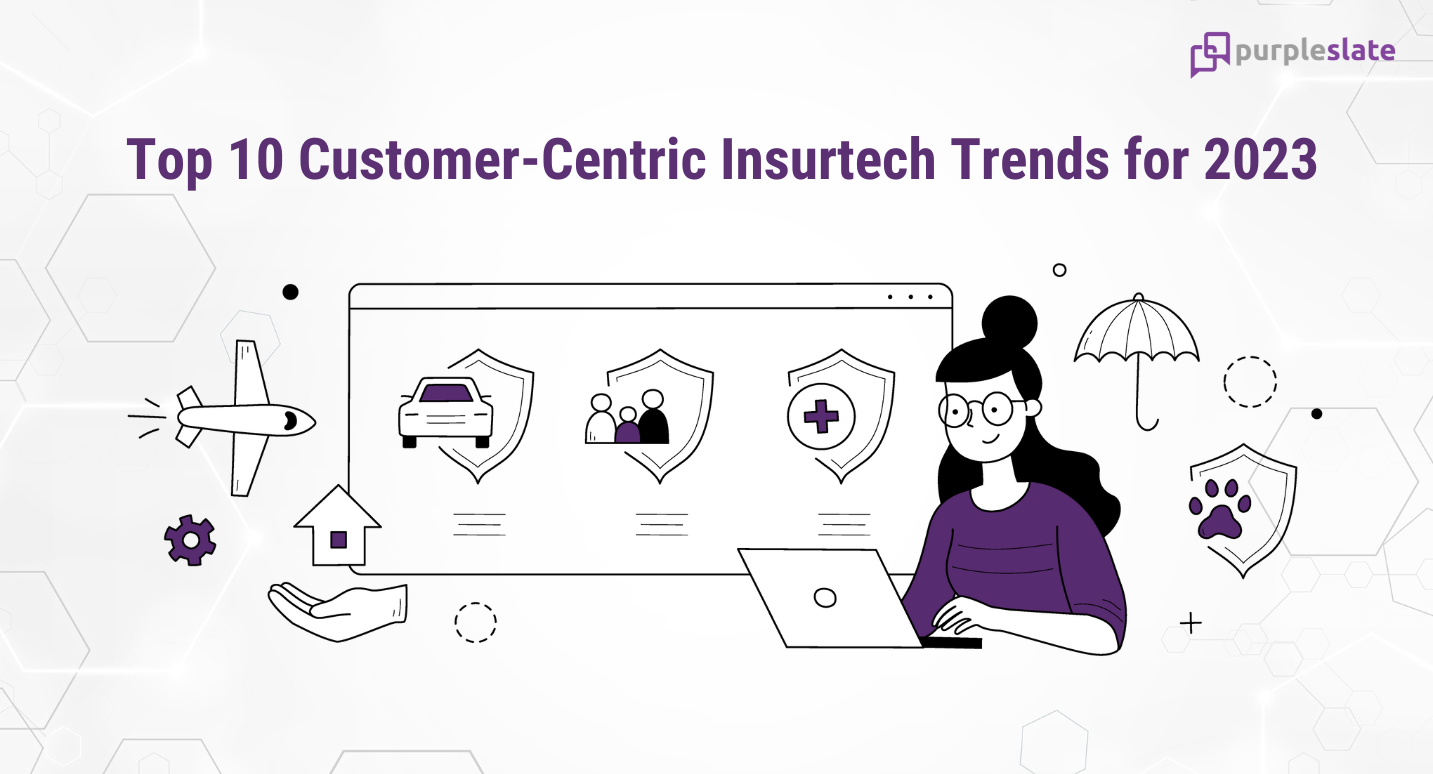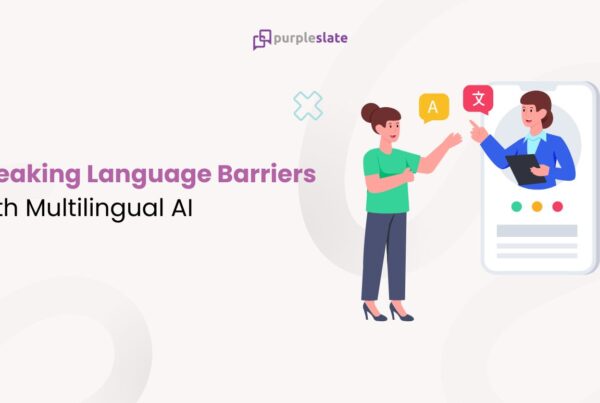
Introduction
Customer-centric means putting the customer first and foremost and providing them with what they want/need and when they want/need it. How to go about it?
- By providing excellent support throughout the customer journeys
- Be accessible to the customer across touchpoints
- Seamless Customer Experience by providing superior service that is reliable, efficient, responsive, relevant, trustworthy and providing value for money.
Customer centricity not only provides financial benefits but helps insurance organizations in branding, opening up new market segments and attracting Gen Z customers. It is estimated 37% of InsurTech spending will be on customer experience (CX) in 2023.
The top 10 CX trends of 2023
1. Omnichannel CX
Customers now expect consistent, integrated experiences across all communication channels. For example, if a customer begins a claim submission procedure over the phone and wishes to complete it through the web customer portal, he or she must be able to complete it without starting the process all over again. There is a growing demand for more integrated and holistic experiences that offer unified, connected experience flow and information consistency across various channels, based on the needs and preferences of the customer.
- Support customers on their preferred channels
- Seamless integration of offline and online CX
- Responsive CX across channels and devices
- Integrating channels to provide seamless client activity across channels
- Autofill forms to prevent customers drop out across channels
To know more, please read the PurpleSlate blog on about Omni Channel CX.
2. Customer Data Platform
Customer Data Platforms(CDP) has an intelligent customer view beyond the Customer 360 degrees. The traditional CRM is giving way to CDP. It begins with leveraging modern data integration approaches.
Data from internal systems such as CRM, core insurance, claim management, digital platforms, and unstructured data such as documents and communication, are combined to form a single customer truth data.
Utilizing big data from systems owned by carriers and third parties to enhance customer personalization and execute underwriting processes.
Data collected from connected devices is helping life and health insurers make smarter underwriting decisions. Please read the PurpleSlate blog on IoT in Risk assessment here that sheds light on connected devices.
CDP will be beneficial
- To communicate with the customer about the new insurance policy and its benefits
- To provide communication on potential products for upsell/cross-sell
- To notify policyholders of renewals/claim status
- To solicit customer feedback
- To enable agents and brokers to have a complete 360-degree customer view on the next action to be taken, to send wishes on birthdays/Anniversaries, recommend any relevant products and explore cross-sell/upsell.
3. Self-service tools
A self-service tool that allows customers to purchase/renew a policy or submit claims has become a de-facto standard for any Insurance portal. It could be a web portal/mobile app customer journey. These tools are focused to provide a great CX experience with the below capabilities.
- Customer-friendly UX across devices
- Business process automation with analytical capabilities
- Secure payment processing
- Personalized profile and dashboards
- Relevant FAQs and help along the customer journeys with a downloadable option for documents.
4. Personalized CX
Over the past decade, customer churn due to poor personalized CX rose by 80%. On the other hand, Insurance companies that provide personalized services were able to retain 80% of their customer base.
Personalized customer experience provides a seamlessly integrated experience across channels and delivers relevant, unique information based on the customer’s past engagement. It is expected out of insurance companies to use customer’s policy data and claim history to provide personalized policies.
To know more about personalized CX insurance read the purpleSlate blog on Hyper personalization in Insurance.
5. Predictive Analysis
Predictive analytics helps insurers to better understand and predict customer behavior. Predictive analytics is useful for managing fraud risk, underwriting, evaluating prices, and detecting customers in jeopardy of cancellation, among other things.
The technique allows for the automation of data model adjustments, which saves time. Further, more detailed data models yield more accurate forecasts of a customer’s risk profile. Predictive analysis is widely used in
- Pricing and policy optimization
- Policy Risk assessment
- Claims management and Fraud detection
To know more about Predictive analysis read the PurpleSlate blog on Predictive analysis.
6. Artificial Intelligence
AI processing helps insurers to create personalized client experiences by automatically evaluating large volumes of customer data. Leveraging AI-based platforms to boost the effectiveness and efficiency of critical functionalities of InsurTech has become a strategic imperative. Artificial intelligence (AI) has can be integrated within the CX for capturing human emotion/sentiment from AV and text messages and automating data capture (Structured and Unstructured)
Insurers can leverage AI capabilities through the following technical solutions:
- AI-enabled chatbots
- Predictive analytics
- Fraud detection
- Document Management
- Claims processing
Visual intelligence has started to play a critical part in customer service. Visual Intelligence-powered apps are used for claim processing largely. By 2030, Visual Intelligence is expected to replace more than 50% of claim-related processes.
7. Internet of Things (IoT)
The Internet of Things (IoT) is composed of billions of physical devices linked to the internet to exchange data with other devices. The IoT makes it possible for insurance companies to use data from inter-connected devices to improve CX. Automatic communication between these interconnected devices enables more accurate predictive analytics, quick decisions, and seamless process automation.
Please read the PurpleSlate blog on IoT in Risk Assessment to get more details
8. Simple and fast CX
Customers mostly interact with Insurance organizations at two critical points. One is policy purchase or renewal and the other is claims submission. In both touch points, the customer journey should be simple and fast. Gen Z is not ready for cumbersome or complex customer journeys.
Insurance companies will need to modernize third-party processes, automate manual tasks, and incorporate digital channels with back-end systems to enable better and quicker digital processing.
9. Embedded insurance
Creating new touch points to engage with customers is to reinvent business models beyond insurance to build an embedded customer experience of the future. Embedded insurance can be purchased from trusted brands. It could become a standard feature of the product rather than something purchased individually.
Using Application programming interfaces (APIs) to seamlessly integrate insurance products and solutions into customers’ digital journeys has become an important avenue of growth.
Carriers and InsurTechs are using Insurance as-a-service business models to integrate insurance products into the existing digital ecosystem. You can read the PurpleSlate blog on embedded insurance here.
10. Cybersecurity and Compliance
The growing frequency and costs of security breaches, as well as heightened regulatory scrutiny, have pushed Insurers to embrace more sophisticated compliance and security solutions. Insurers are increasingly collaborating with InsurTechs to help secure their platforms and discover silent cyber vulnerabilities across business lines. Insurers hold critical customer data and they must provide information security and comply with regulatory requirements. This involves in identifying emerging cyber risks and threats and playing a vital role in developing new technologies for monitoring ongoing risks and ensuring that customers remain fully covered and protected.
The other two notable CX InsurTech trends are
1. Cryptocurrency
2. Blockchain and Distributed Ledger Platforms
Conclusion
To win the loyalty of customers and remain relevant in the future, insurers must embark on the digital transformation journey. Insurers should reorient their organizational culture towards customer-centricity to make insurance available anywhere and anytime. It is not an easy task. It involves investments in Omni channels, adopting new technologies, modernization of legacy systems, recalibrating business processes, change in organizational culture, and most of all paradigm shift in organization strategy and human mindset.




